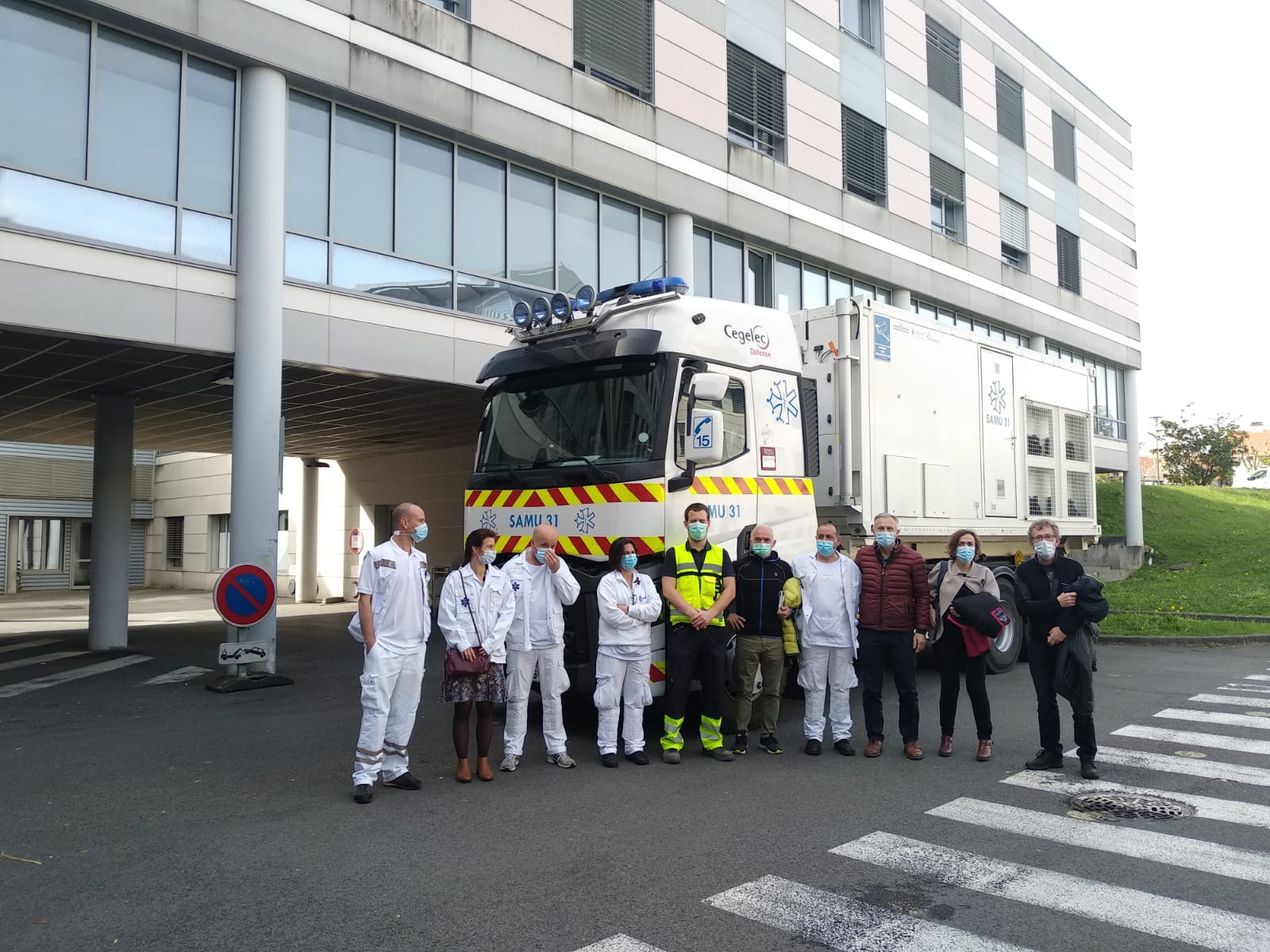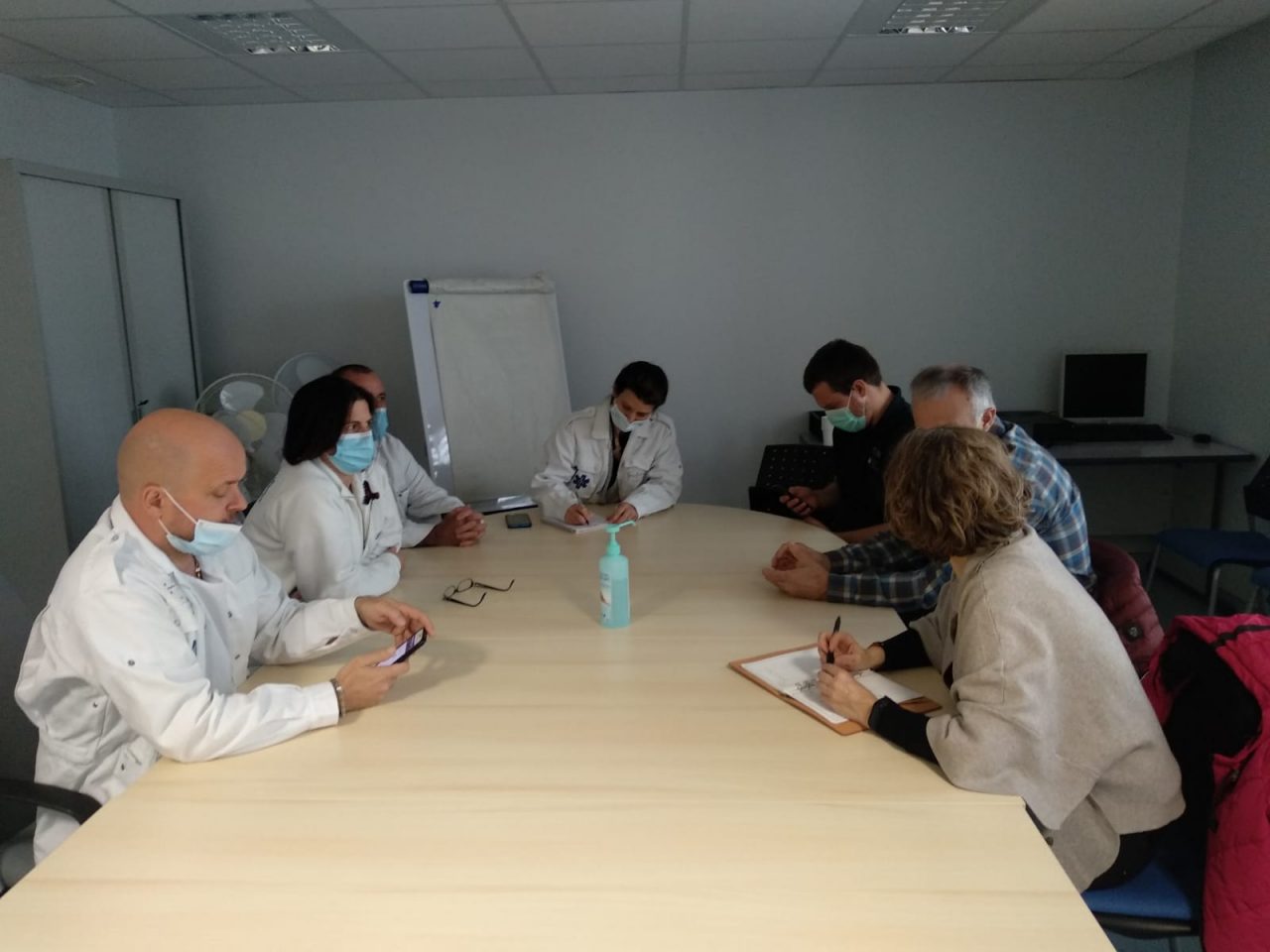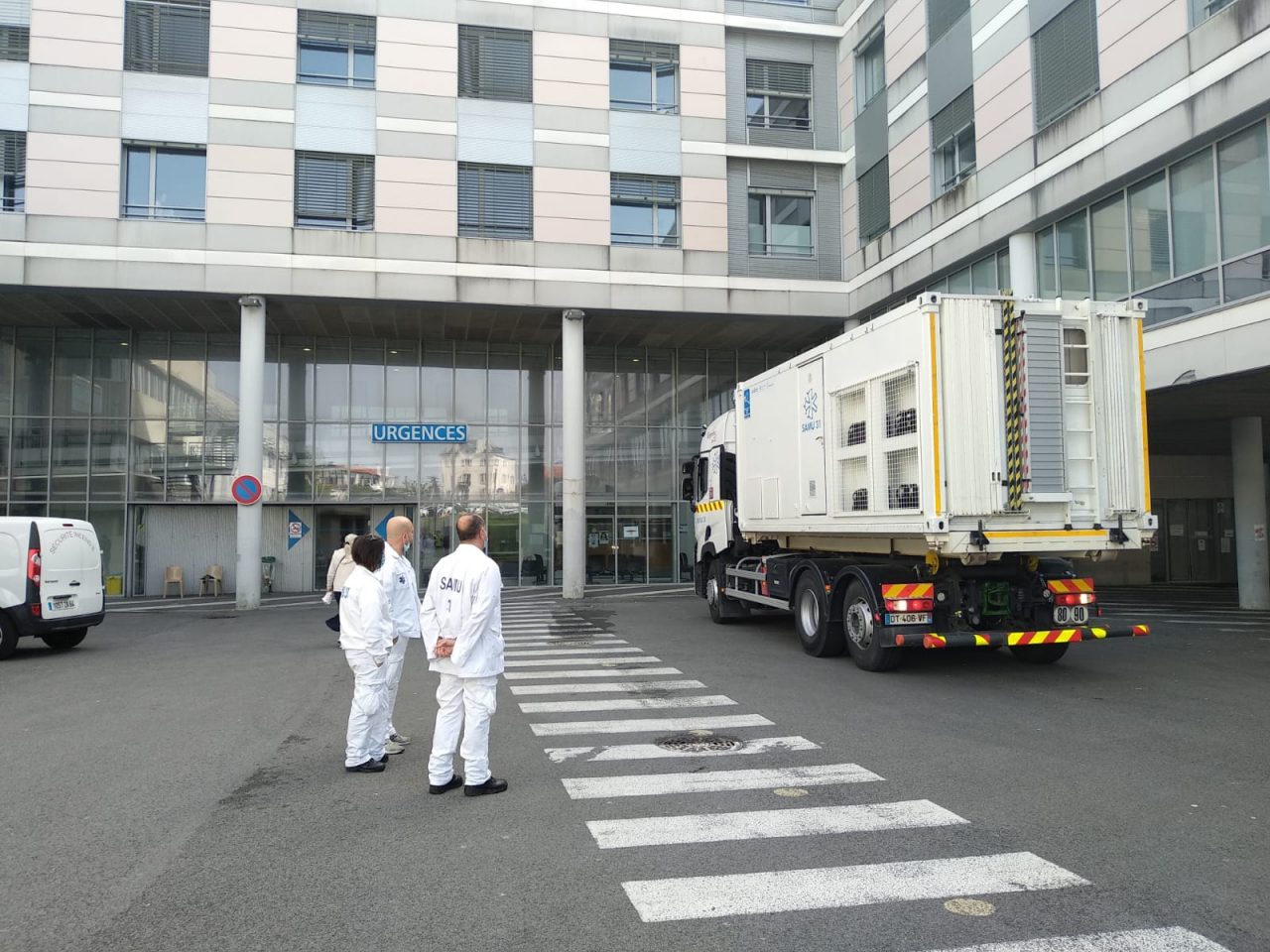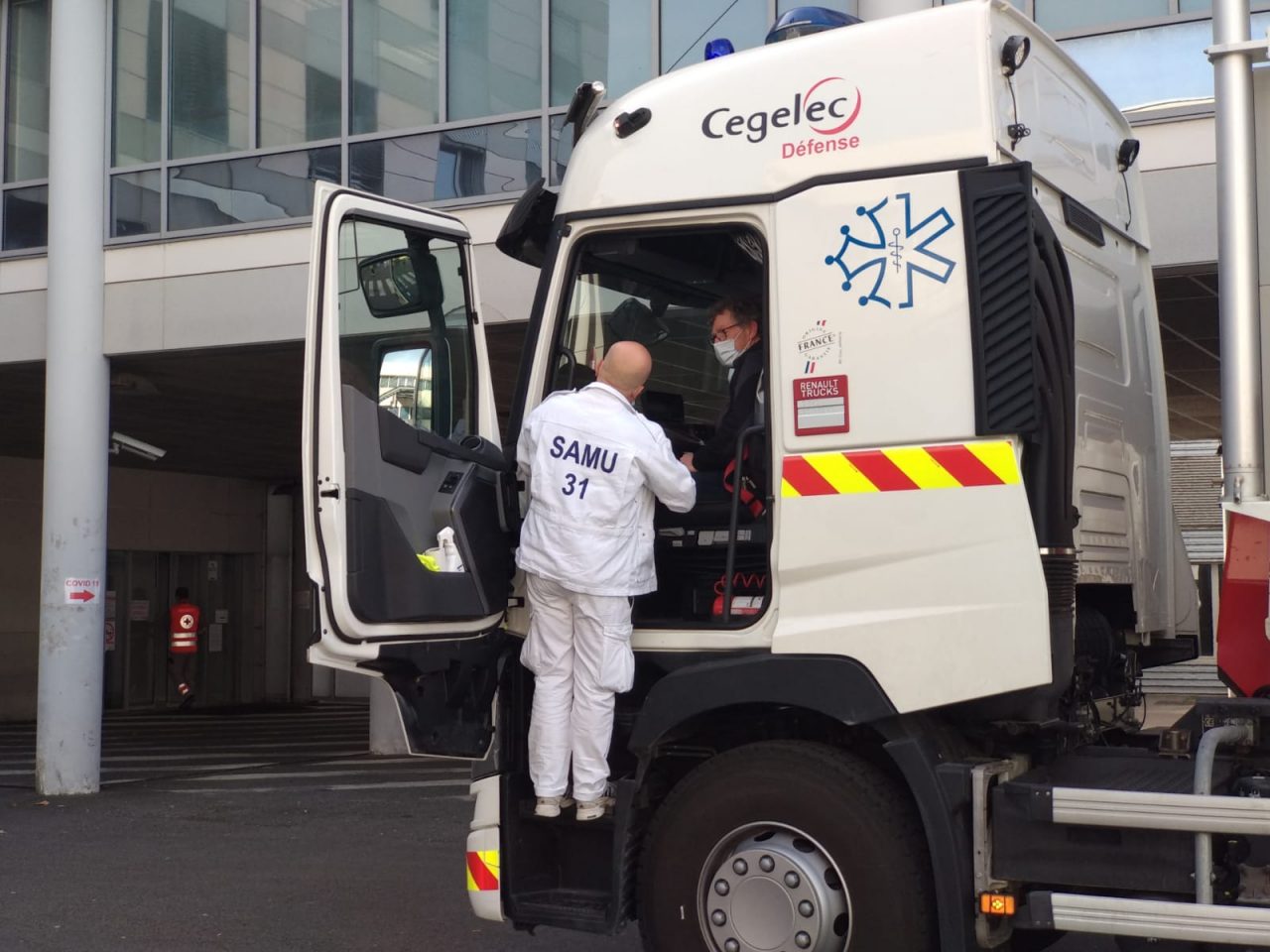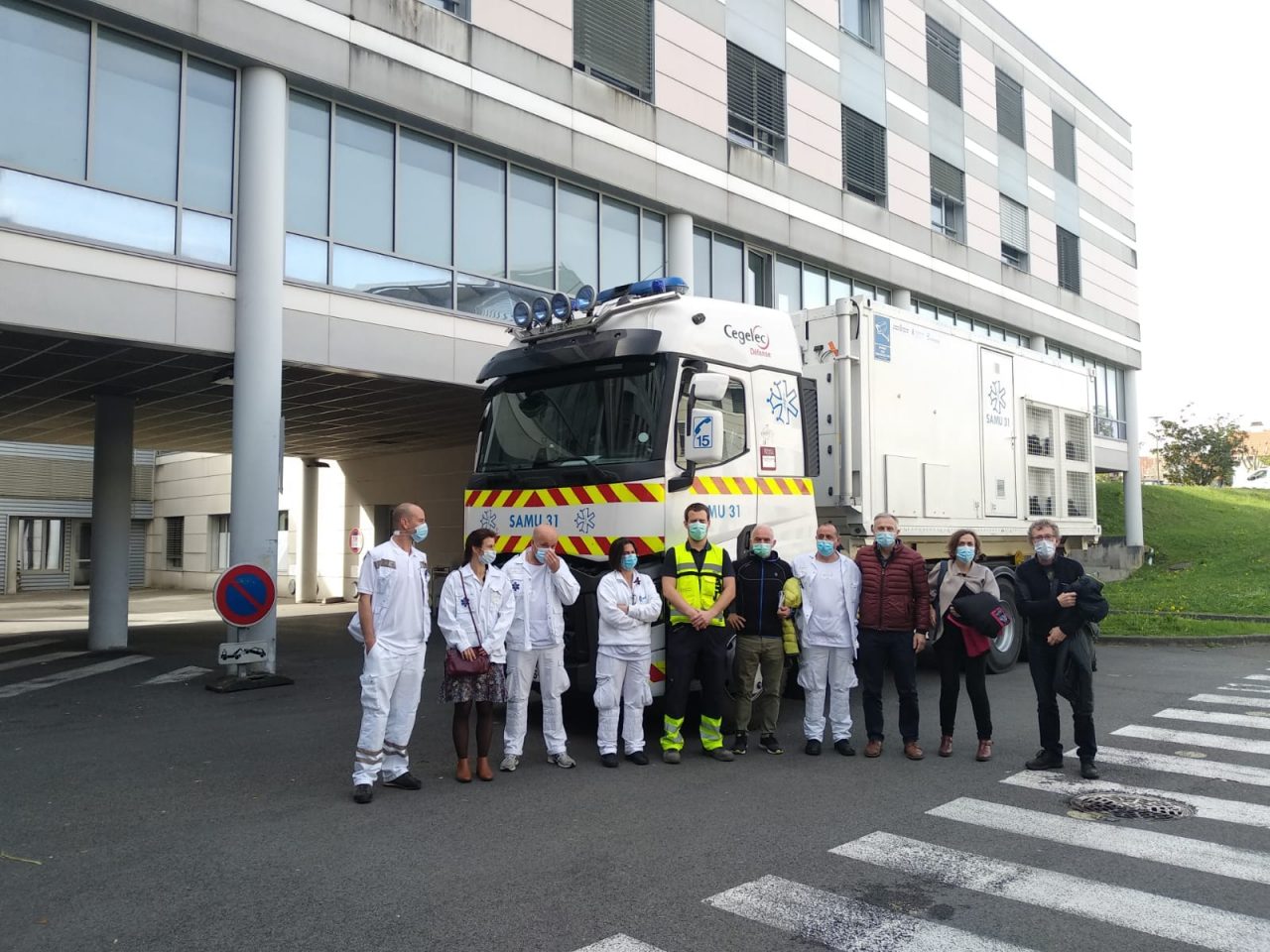In the coming months, it will travel to hard-to-reach areas in the Haute-Garonne region to administer coronavirus vaccines before moving on to Andorra.
The Europe Occitania Multipurpose Mobile Unit (UMPEO) is returning to the University Hospital Center of Toulouse (CHUT) after spending six weeks traveling around Navarre to support the COVID-19 vaccination campaign. This cooperation project has taken place within the framework of the EGALURG European cross-border network, which made it possible to create this innovative facility.
Handover of the UMPEO took place yesterday (February 25) at the Hospital Center of the Basque Coast. Staff from Toulouse Emergency Medical Services, part of the CHUT, and a team from the Navarre Health Service and Navarrabiomed traveled to the partner organization in Bayonne, where they shared their impressions of the visit to Navarre and their use of the unit. During the meeting, where all of the current health protocols were observed, all of the professionals expressed their satisfaction and gratitude for this cooperation between regions.
Upon the unit’s return to the Occitania region, the CHUT will initially use it for the same purpose, i.e. to administer COVID-19 vaccines. The knowledge acquired by the professionals in Navarre during their time with the UMPEO will help the CHUT improve the mobile unit’s systems and optimize its use. The UMPEO is expected to move to Andorra in mid-April.
Tomás Belzunegui, Scientific Director of the EGALURG Project at Navarrabiomed, praised the way the unit had been used in Navarre and the cooperation that made it possible. He also expressed his gratitude on social media:
“It’s been a real pleasure to share our experiences with our colleagues from Emergency Medical Services in Bayonne and Toulouse. Eskerrik asko denengandik”
More than 750 inoculations
The healthcare teams in Navarre, made up of nurses, medical emergency technicians from the Navarre Health Service (SNS-O), volunteer firefighters, and volunteers from the Red Cross and the DYA emergency assistance association, inoculated more than 750 people using the UMPEO, according to data from Aitor Erice, a medical emergency technician at the SNS-O, who was responsible for managing the unit.
In January and February, the UMPEO traveled to different municipalities within the region to administer vaccines outside of healthcare centers and to facilitate access for dependent people and others living in rural areas. The aim was to help prevent overcrowding and reduce the risk of infection.
The teams were also assisted by volunteers from Navarre-based healthcare organizations, who helped transport elderly and disabled people to the UMPEO. In total, the unit visited four different areas (Oronoz-Mugaire, Estella, Sangüesa and Peralta) on two separate occasions to administer both doses of the Pfizer vaccine. The operation also required painstaking organization and logistics to administer the vaccines within the set periods. “We can’t waste a single dose, so we have to plan everything very carefully. If there’s any vaccine left over, which very rarely happens, we have a Plan B and even a Plan C for administering it,” Erice asserted.
In order to be able to use the UMPEO, a team from Navarre traveled to the CHUT to learn how to deploy and handle it:
The project is co-funded (65%) by the European Regional Development Fund (ERDF) through the Interreg Program V-A Spain-France-Andorra (POCTEFA 2014-2020). The goal of the POCTEFA program is to strengthen the economic and social integration of the Spain-France-Andorra cross-border area. Its help is focused on developing cross-border economic, social and environmental projects through joint strategies in favor of sustainable regional development.
